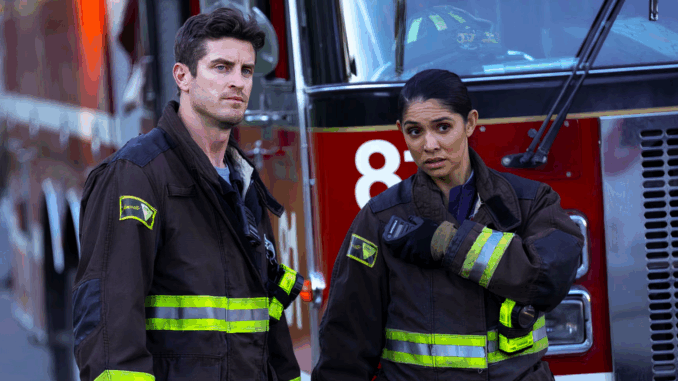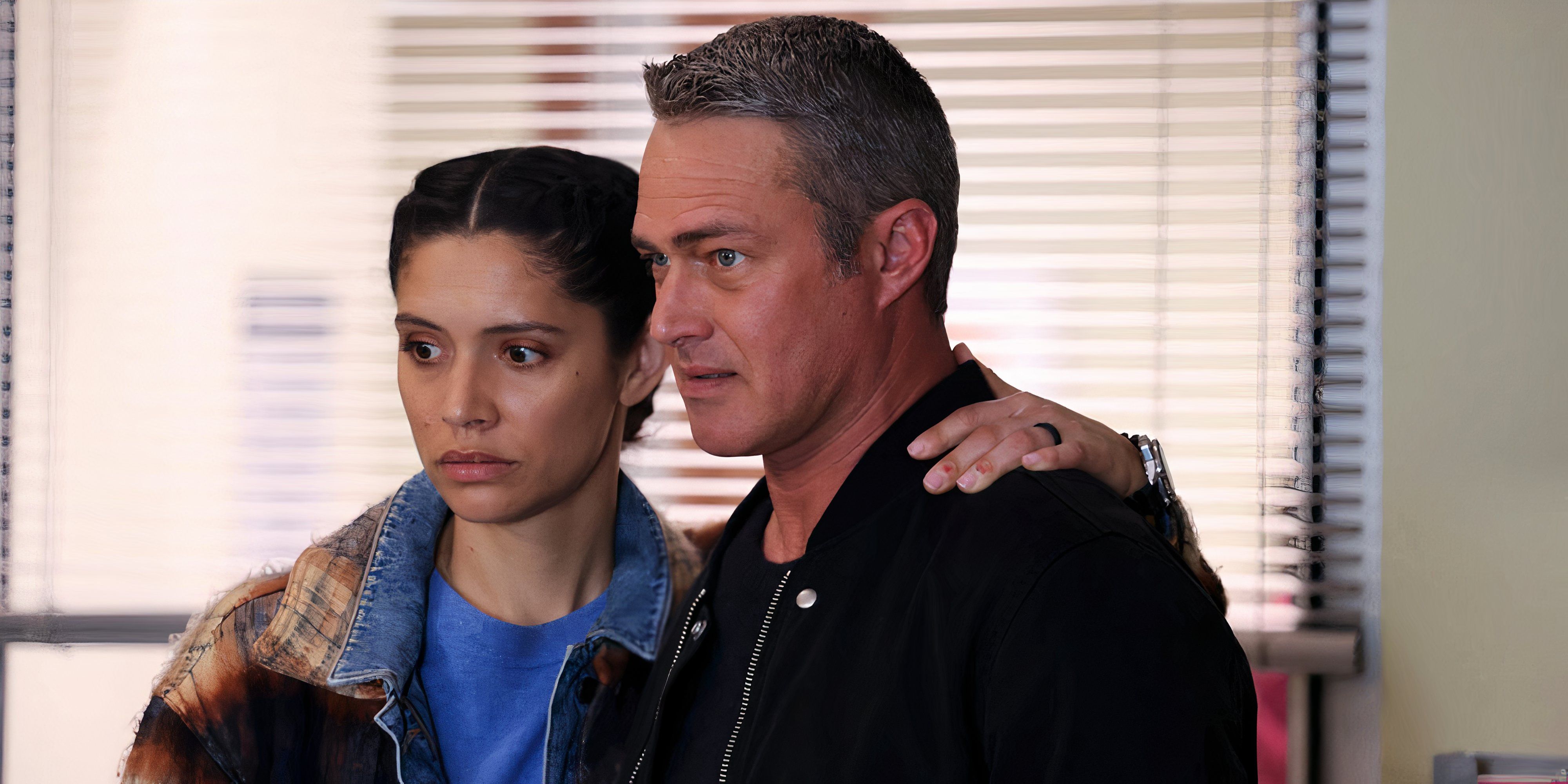
The Firehouse as Family: More Than Just Coworkers
Firehouse 51 is more than a workplace. From the very first episode, Chicago Fire has built its world on the idea that firefighters are a family forged in flames — and nowhere is that clearer than in how the characters carry each other through grief, danger, celebration, and personal change.
Whether it’s Casey mentoring younger firefighters, Severide diving head-first into danger for his team, or Boden holding everyone together as a true patriarch, every major arc of the show begins and ends with relationships. And as each season unfolds, these bonds are tested in new, sometimes devastating ways.
Casey and Severide: The Brotherhood at the Core
Captain Casey’s Departure and Quiet Return
Matthew Casey (Jesse Spencer) was the moral center of Firehouse 51 for nearly a decade. His calm presence and ethical compass grounded the team through some of its most chaotic fires and personal crises. When he left to care for his best friend’s children in Oregon, it felt like a piece of the firehouse went with him. But when he returned in Season 11 for Stella and Severide’s wedding — and again in Season 12 — fans held their breath. Was he back for good?
The chemistry between Casey and Brett never fully faded, and his presence brings a nostalgic weight to newer episodes. He’s no longer the full-time captain, but his influence still shapes the way the team operates — and how they lean on each other when the heat rises.
Severide’s Evolution Through Loss and Loyalty
Kelly Severide (Taylor Kinney) has evolved more than almost anyone else. From a reckless, emotionally closed-off squad leader in Season 1 to a thoughtful, quietly intense team player, Severide has experienced incredible growth — much of it shaped by trauma.
From the death of his best friend Shay in Season 3 to the complicated dynamic with his father Benny, and now to his deepening relationship with Stella Kidd, Severide has become the emotional backbone of Rescue Squad 3. His temporary departure in Season 11 to work with the arson unit showed us a man torn between duty and identity — and his return suggests even more internal battles ahead.
Strong Women in the Line of Fire
Stella Kidd: Leadership Tested in the Flames
Stella Kidd (Miranda Rae Mayo) has grown from ambitious newcomer to one of Firehouse 51’s strongest leaders. Her “Girls on Fire” mentorship program and her promotion to lieutenant gave her meaningful arcs beyond romance, showing that Chicago Fire knows how to handle women in power without making them caricatures.
In Season 12, Kidd’s patience, strategy, and emotional intuition are tested as she balances leading Truck 81 and navigating her marriage to Severide. The writers give her weight without making her the “strong female character” trope — she fails, succeeds, doubts, and overcomes, like any great leader would.
Sylvie Brett’s Crossroads
Sylvie Brett (Kara Killmer) has had one of the most dynamic arcs on the show. From her bubbly beginnings to becoming the rock of the paramedics team, Brett has weathered heartbreak, death, and decisions about motherhood and marriage.
Her on-again, off-again relationship with Casey has been a slow burn, but her decision to potentially leave Chicago to be with him in Oregon wasn’t just about love — it was about identity. Does she belong in the adrenaline of Chicago EMS, or in the quieter life Casey offers? Brett’s storyline is where the show explores ambition vs. fulfillment in deeply human terms.
The Weight of Loss: Deaths That Changed Everything

Otis’ Death: A Heartbreaking Shift
Brian “Otis” Zvonecek’s death in Season 8 was a seismic moment for the show. It was the first time Chicago Fire truly reminded audiences that being a firefighter is not just dramatic — it’s dangerous. Otis wasn’t just comic relief; he was family. His death in the mattress factory fire gutted the firehouse and sent ripples through Cruz’s storylines for seasons after.
The Silent Echo of Shay and Leslie’s Legacy
Though it’s been years since Shay died in that hallway explosion, her memory lingers like smoke. Her friendship with Severide, her sharp wit, her fierce compassion — it all helped shape what Chicago Fire became. Episodes still call back to her, showing that grief never fully fades, and neither do the people we lose.
The Backbone of the Firehouse: Cruz, Herrmann, Mouch & Boden
Joe Cruz: Carrying Otis’ Legacy
Cruz has grown enormously in the aftermath of Otis’ death. Once a younger, impulsive firefighter, he has now become a mentor, a father, and someone others turn to in crisis. His journey from gang affiliations in early seasons to dependable veteran reflects Chicago Fire’s greatest strength: long-form character development.
Herrmann and Molly’s: The Soul of the Squad
Christopher Herrmann (David Eigenberg) might be the most underrated character on the show. Blunt, hilarious, and fiercely loyal, Herrmann represents the heart of Firehouse 51. His bar, Molly’s, is more than a business — it’s where the team heals, laughs, and builds memories. Every wedding toast, every celebratory drink, every late-night venting session — it happens at Molly’s, and Herrmann is always behind the bar, ready with wisdom and beer.
Chief Boden: The Father Figure Chicago Needs
Chief Wallace Boden (Eamonn Walker) is the moral compass and unshakeable foundation of Chicago Fire. His quiet strength, his deep loyalty to his team, and his fight to protect the firehouse from bureaucratic threats have made him a fan favorite. He doesn’t need dramatic storylines — his presence alone anchors the entire series.
Conclusion: Why Chicago Fire Still Burns Bright
Twelve seasons in, Chicago Fire is still telling stories that matter. It doesn’t rely on flashy rescues alone (though it still delivers those with jaw-dropping intensity). What makes it truly special is its ability to blend action with character-driven storytelling. These aren’t just firefighters. They’re people — growing, hurting, laughing, loving.
And for fans, Firehouse 51 isn’t just a place on screen. It’s home.
